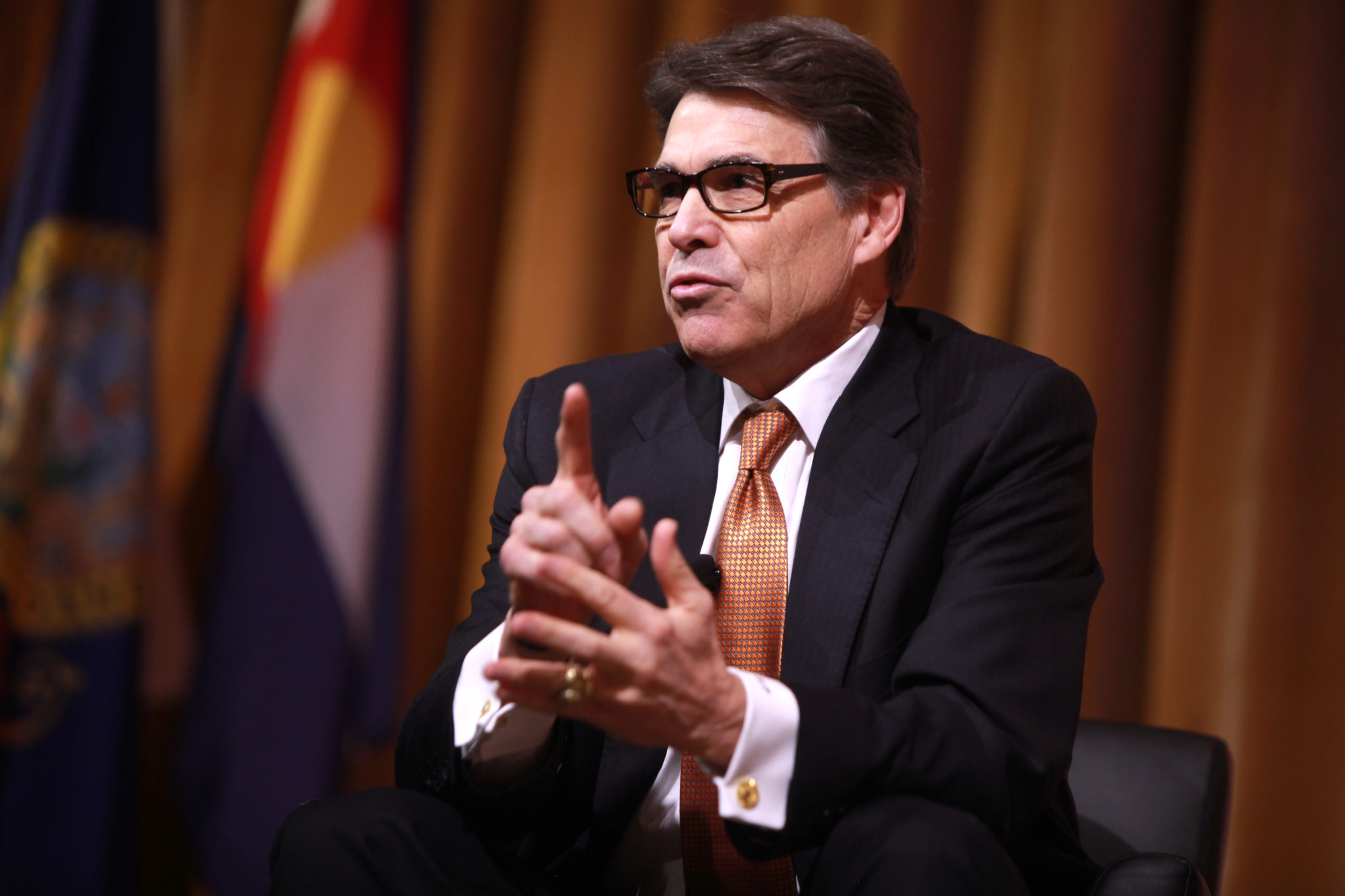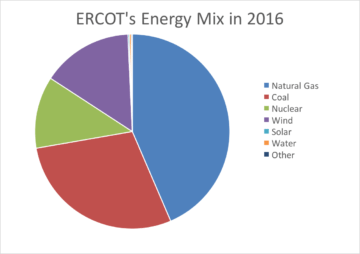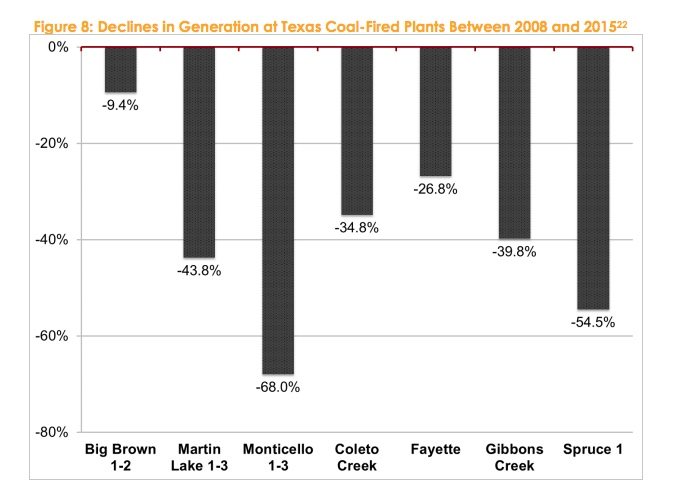
After Failing to Prop Up Coal in Texas, Rick Perry is Trying Again Nationwide
As energy secretary, Perry is proposing to guarantee profits for uncompetitive coal plants in the Northeast, Mid-Atlantic and Midwest.


In late 2005, then-Governor Rick Perry was in the middle of a protracted battle with a coalition of environmentalists, renewable energy advocates, mayors and local leaders. TXU, the state’s largest utility, had announced that it wanted to build 11 new coal plants. At the time, natural gas and coal made up about 46 and 39 percent, respectively, of the energy mix of Texas’ main grid. The fracking boom had not yet hit Texas, and wind power provided a tiny percentage of the state’s energy needs.
TXU was betting big on coal having a bright future. John Wilder, the utility’s controversial CEO, claimed the new investments would shield Texans from spikes in natural gas prices, in particular because the volatile commodity’s price had quadrupled and experts projected the low prices of the 1990s would not return. The U.S. also had an abundant coal supply, he noted.
Perry loved the plan. It probably didn’t hurt that he was running for re-election at the time and had received about $200,000 from TXU since 2000. On the campaign trail, Perry claimed the coal plants would be cleaner than the national average and ordered the state environmental agency to expedite their review.
Now, 12 years later, Perry and TXU’s plan to invest in coal seems shortsighted. While TXU is moving away from coal investments, as energy secretary Perry is continuing to prop up old and dirty coal plants at a time when scientists are warning that countries need to reduce carbon pollution to stave off the worst effects of climate change.

Natural gas prices, of course, dropped considerably and coal has become more expensive to mine. Today, coal only makes up about 29 percent of the energy mix in Texas and the cost of building wind farms has decreased dramatically. Last week, Luminant, a subsidiary of Vistra Energy formerly known as TXU, citing “an oversupplied renewable generation market and low natural gas prices,” announced that it will retire three coal plants — Monticello, Big Brown and Sandow — by early 2018. Once those plants shut down, for the first time, wind will generate more power in the state than coal.
Ultimately, in 2006, facing pressure from environmental groups and business interests, TXU dropped its plan to build eight of the 11 coal plants. Perry’s order to fast-track the environmental reviews was also blocked by a court. And now one of the coal plants Perry wanted to see built — Sandow 5 in Milam County — is among those facing closure. Another, Oak Grove Plant Project in Robertson County, has low cash flows. The plants began operations in 2009 and 2010, respectively.
But Perry doesn’t appear to have learned from his experience in Texas. As energy secretary, Perry has proposed guaranteeing profits to plants in the Northeast, Mid-Atlantic and Midwest that stockpile coal. Perry claims the plan is necessary for grid reliability and cites the 2014 polar vortex as an example of why the government should subsidize coal plants. If the plan is implemented, it will cost taxpayers between $800 million and $3.8 billion every year through 2030 regardless of whether the plants are making money, according to one estimate.
“I think you take costs into account, but what’s the cost of freedom?” Perry recently testified to lawmakers.
“It’s basically putting your thumb on the scale in favor of coal and nuclear plants,” said David Schlissel, director of resource planning at the Institute for Energy Economics & Financial Analysis. “It’s a gift from the Trump administration to their friends in the coal industry.”
For Perry, the costs are secondary. “I think you take costs into account, but what’s the cost of freedom?” he testified before the House energy subcommittee recently. “What’s the cost to keep America free? I’m not sure I want to leave that up to the free market.”
Even if Perry’s plan to guarantee profits to the coal and nuclear industry is implemented, he won’t be helping Texas coal plants. That’s because the Electric Reliability Council of Texas (ERCOT), Texas’ primary grid, is the only major wholesale electricity market that doesn’t fall under the supervision of the Federal Energy Regulatory Commission, which will be responsible for implementing Perry’s plan.
In 2016, Schlissel authored a report that seems prescient now. He analyzed the economics of running seven Texas coal plants and predicted that the Monticello and Big Brown plants were bleeding money. Continued operation of the two “will be extremely unprofitable for Luminant,” he wrote.

Schlissel based his analysis on two main drivers: the increasing cost of producing coal-fired power and the decreasing price of power on the energy market. As natural gas plants and renewables produce energy at a cheaper rate, there’s less demand for coal-fired power. Since the cost of operating and maintaining coal plants doesn’t change dramatically when they produce less power, utilities then make less money per megawatt of coal energy. The double whammy has made coal uneconomic in Texas, Schlissel said.
“What’s killing these coal plants is not the Obama war on coal,” said Schlissel. “It’s the natural gas’ war on coal and all the wind available on [the grid].”
Schlissel wasn’t alone in predicting Luminant’s decision to shut down the three coal plants. In a 2016 report, ERCOT projected that between 8,000 and 18,000 megawatts of coal-fired plants will be shut down between 2017 and 2031. The group modeled eight scenarios and found that in all cases the Monticello and Big Brown plants would be shuttered.
Robbie Searcy, a spokesperson for ERCOT, said her group will study whether the three Luminant plants are needed for reliability and will make determinations about them by December. Luminant has said it hopes to close the plants by early 2018, but when they’re shut down will depend on ERCOT’s recommendation.


